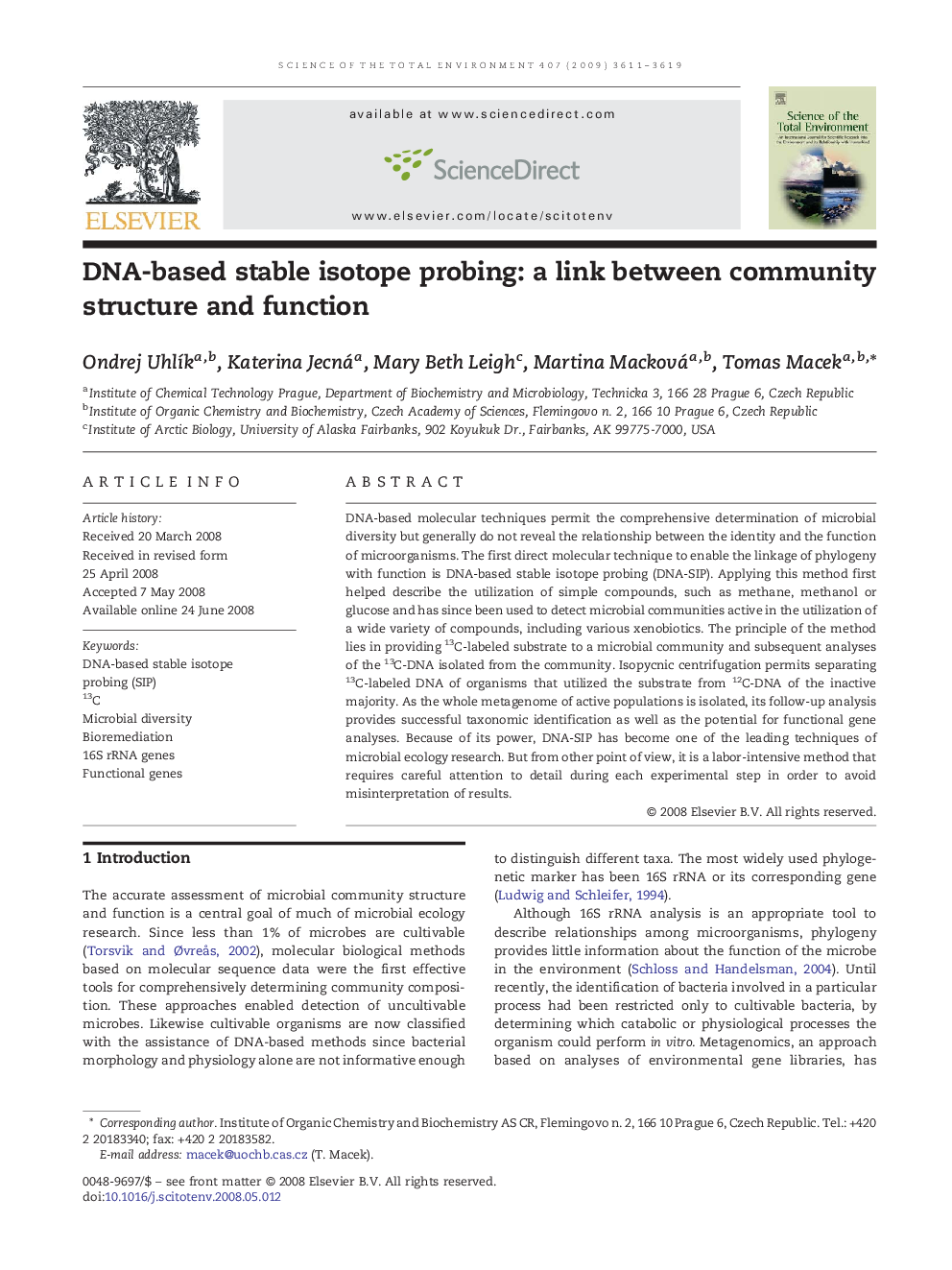| Article ID | Journal | Published Year | Pages | File Type |
|---|---|---|---|---|
| 4431806 | Science of The Total Environment | 2009 | 9 Pages |
DNA-based molecular techniques permit the comprehensive determination of microbial diversity but generally do not reveal the relationship between the identity and the function of microorganisms. The first direct molecular technique to enable the linkage of phylogeny with function is DNA-based stable isotope probing (DNA-SIP). Applying this method first helped describe the utilization of simple compounds, such as methane, methanol or glucose and has since been used to detect microbial communities active in the utilization of a wide variety of compounds, including various xenobiotics. The principle of the method lies in providing 13C-labeled substrate to a microbial community and subsequent analyses of the 13C-DNA isolated from the community. Isopycnic centrifugation permits separating 13C-labeled DNA of organisms that utilized the substrate from 12C-DNA of the inactive majority. As the whole metagenome of active populations is isolated, its follow-up analysis provides successful taxonomic identification as well as the potential for functional gene analyses. Because of its power, DNA-SIP has become one of the leading techniques of microbial ecology research. But from other point of view, it is a labor-intensive method that requires careful attention to detail during each experimental step in order to avoid misinterpretation of results.
